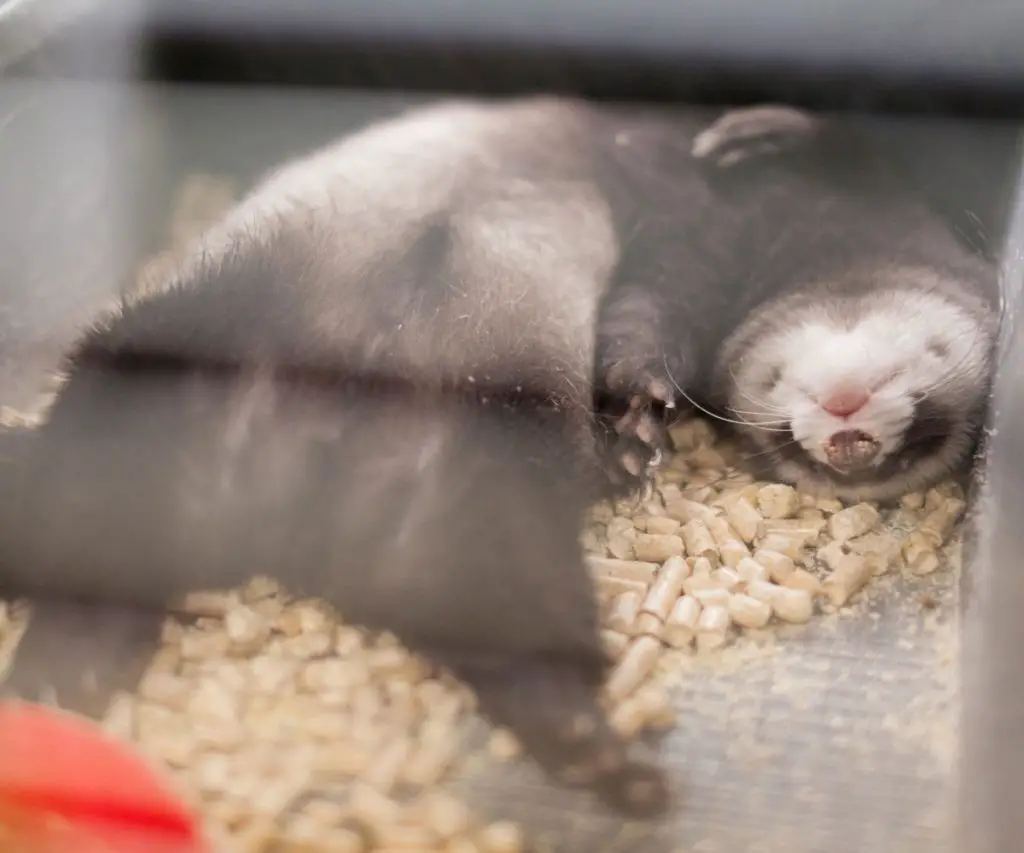Many wood beddings aren’t safe for ferrets, as they can predispose ferrets to respiratory diseases such as influenza.
So, if you’re wondering, “What kind of wood bedding is safe for ferrets?” we’ll help you understand your best bedding options. Here’s a hint—there are a lot of choices aside from the wooden variety.
What Kind of Wood Bedding is Safe for Ferrets?
Wood pellets and aspen bedding that manufacturers process to remove excess dust are safe wood bedding for ferrets. You should avoid softwood bedding, as they contain essential oils that can damage your ferret’s respiratory system.
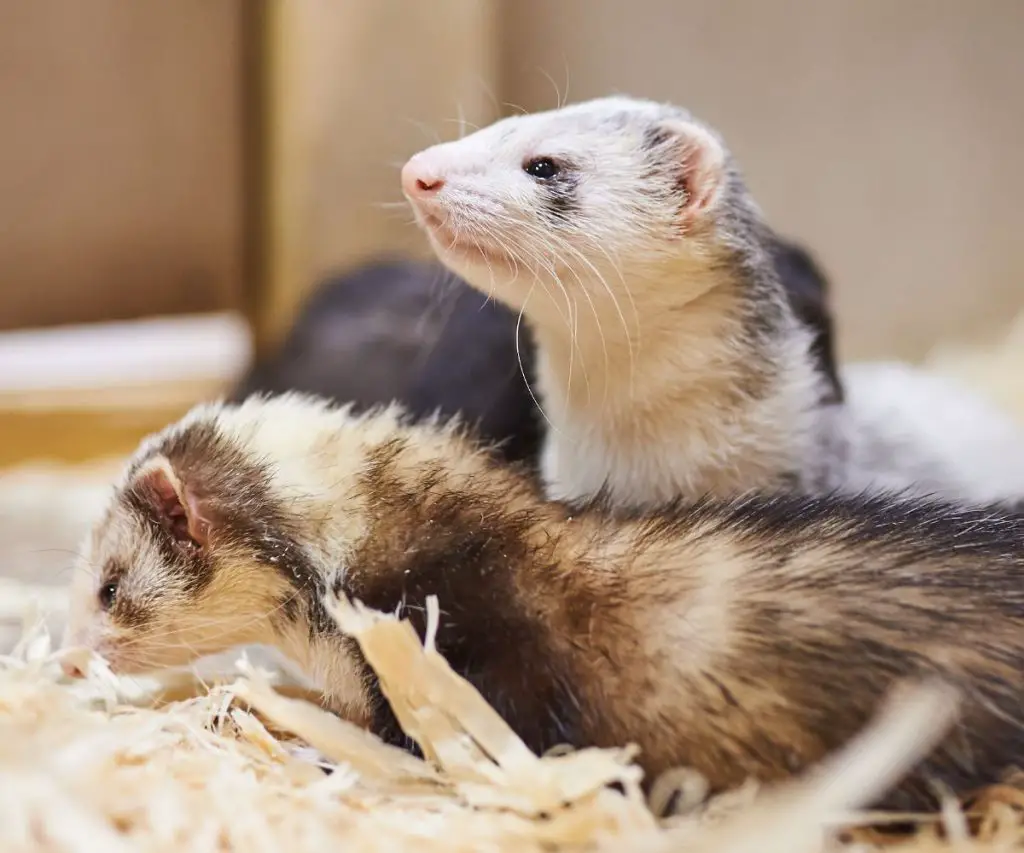
Are Wood Beddings Safe for Ferrets?
Wood beddings aren’t typically the safest option for ferrets, with a couple of exceptions. Wood pellets and aspen bedding made for small animals are safe wood bedding varieties because they don’t contain essential oils, phenol, or excessive dust.
Ferrets have sensitive respiratory tracts. According to a study on respiratory diseases in ferrets, stress and poor care are the biggest causes of ferrets’ undergoing respiratory health issues.
For this reason, even if you use safe wood bedding for your ferret, it’s crucial to clean their cage daily. Otherwise, you could inadvertently predispose your ferret to respiratory diseases.
Can Ferrets Use Pine Bedding?
Pine bedding is a dangerous choice for ferrets because of its essential oils.
The vapors that pine wood naturally releases can damage your ferret’s respiratory system. It can also cause shifts in their enzymes and liver, making a trip to the veterinarian likely.

Can Ferrets Use Cedar Bedding?
Cedar is another bedding that has essential oils in the form of aromatic hydrocarbons and phenol.
Like pine bedding, manufacturers don’t fully process cedar bedding. That means oil remains in the wood.
Since ferrets love to dig and burrow, they can kick up these essential oils even more. As a result, they may suffer from respiratory and liver damage.
Quick tip: Essential oils are also the reason why ferrets and candles are not a good match. The same is true for incense!
Can Ferrets Use Aspen Bedding?
Ferrets can use aspen as long as you purchase it from a manufacturer specializing in turning aspen shavings into small animal bedding.
Aspen is a hardwood. It typically lacks the harmful phenols and essential oils that cedar and pine have. Nevertheless, it can contain a significant amount of dust and wood debris.
For this reason, choosing an aspen bedding like Kaytee is an excellent option. Their aspen shavings undergo special processing to remove dust and debris that can affect your ferret’s respiratory system. Furthermore, it’s a biodegradable product without artificial colors, and they guarantee odor control.
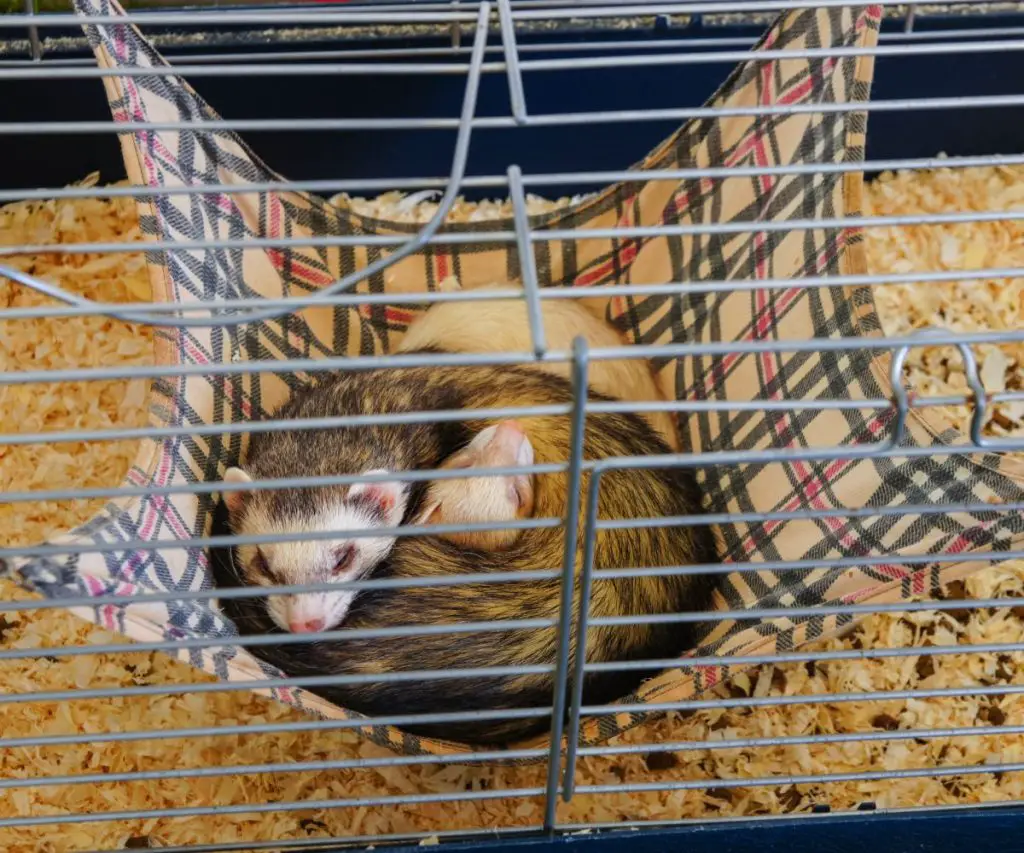
Can You Use Sawdust for Ferrets?
You should never use sawdust for ferrets. Sawdust has an abundance of the very word that’s in its name—dust.
Ferrets have a sensitive respiratory system, so inhaling dust can predispose them to diseases.
Furthermore, ferrets love to borrow and explore. So, you can count on them sifting through their bedding with their noses, causing them to inhale an even greater quantity of dangerous particles from sawdust.
Needless to say, when considering “What kind of wood bedding is safe for ferrets?” you should always avoid sawdust and softwoods.
What Isn’t the Best Bedding for Ferrets?
There are many beddings that you should avoid giving your ferret, including:
- Softwood bedding (such as pine and cedar)
- Sawdust
- Straw
- Hay
As a general rule, wood shavings of any kind aren’t ideal for ferrets. An exception to this is aspen shavings that manufacturers specifically process to be safe for small animals.
Furthermore, you shouldn’t use cat litter or sand as bedding. Your ferret can inhale these particles as they burrow into their bedding, creating the potential for intestinal blockages. Cat litter that becomes damp can also stick to your ferret’s feet and nose.
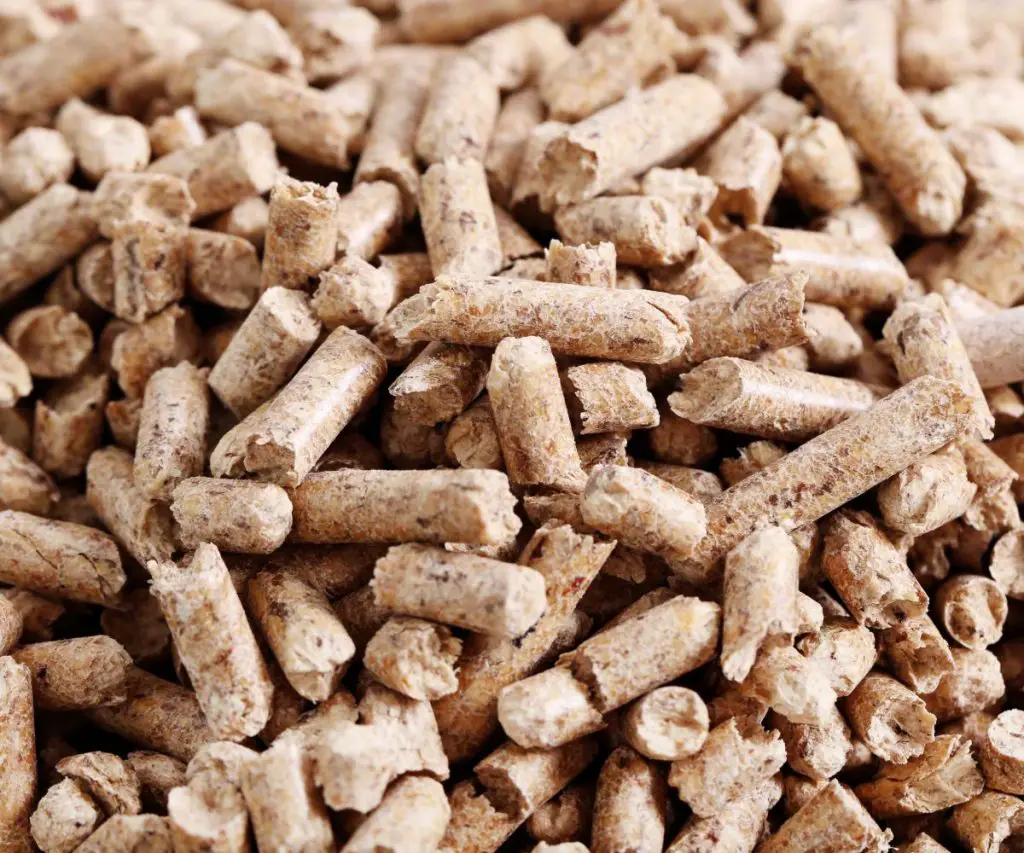
What Are Alternatives to Wood Beddings for Ferrets?
Several safe alternatives to wood shaving beddings exist for ferrets, including wood pellets, recycled paper, corn cobs, and old clothing.
Wood Pellets
Wood pellets are a low-dust, essential oil-free alternative to wood shavings. They are about 2.5 times better at absorbing moisture than wood shavings. Furthermore, they do an excellent job of mitigating odors, in great part because of their absorption properties.
When using wood pellets made for animals, you don’t have to worry about them containing chemicals. They’re also 100% biodegradable.
Recycled Paper
Recycled paper makes for excellent ferret bedding. But it needs to undergo some processing to make it absorbent—if you shred up some newspaper and stick it in your ferret’s cage, you’ll have a mess on your hands if they go to the bathroom on it.
Most people choose to purchase recycled paper bedding specially prepared for animals. However, if you have time and a lot of recycled paper or toilet paper on hand, you can make it yourself.
The benefits of using recycled paper for bedding are that you don’t have to worry about dust, it’s low cost, and environmentally friendly.
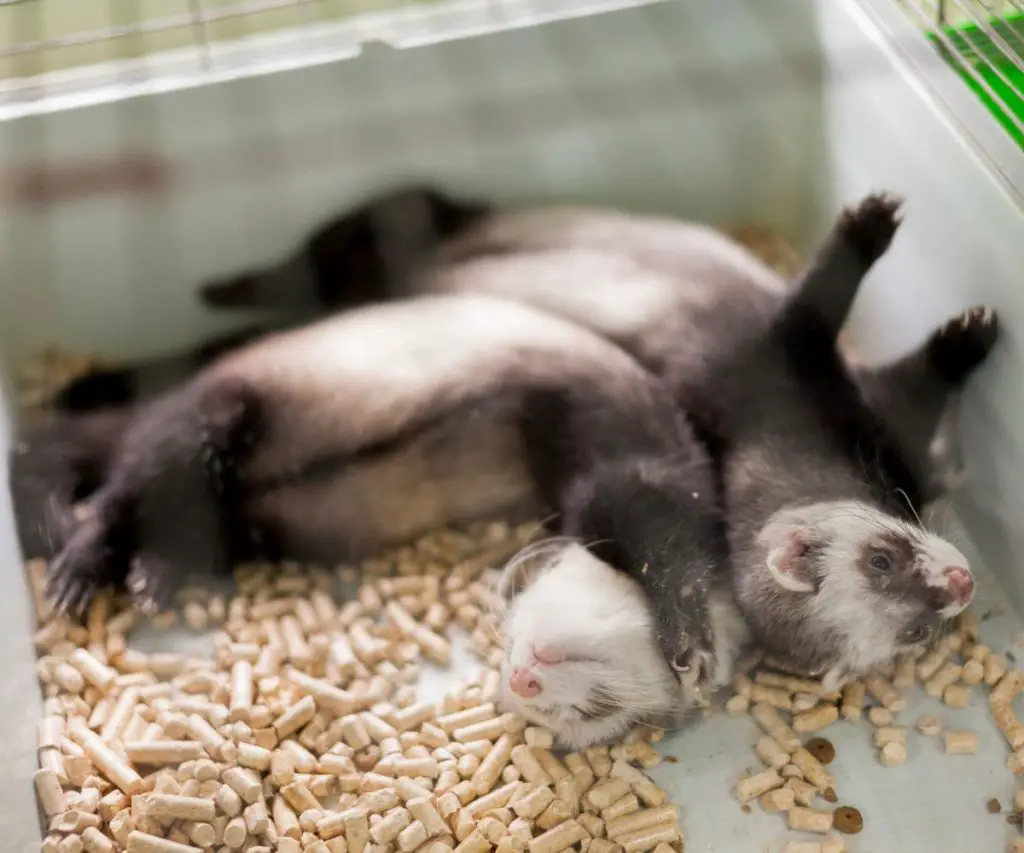
Corn Cobs
You can’t place whole corn cobs in your ferret’s cage and expect it to work well for bedding. However, corn cob pellets are a comfortable and absorbent bedding material.
By processing the corn cobs with water and steam, the pellets become an ammonia-fighting machine. They remain biodegradable even in their pellet form, making them yet another environmentally friendly option.
Old Clothing
Your ferret doesn’t care that the shirt you bought ten years ago is out of style. So, if you have old or torn clothes lying around your house, they can make excellent bedding for your ferret.
To prepare the bedding, cut your clothing into strips. Then, place the strips into the cage. If you don’t have enough clothes to make a comfy bedding layer for your ferret, feel free to mix it with another bedding option we covered here.
What Is the Best Bedding for Ferrets?
The best kind of wood bedding for ferrets includes processed aspen or wood pellets, as they don’t contain fumes that are dangerous for your ferret’s respiratory system. Alternatively, you can use bedding made from recycled paper, corn cobs, or old clothing.

